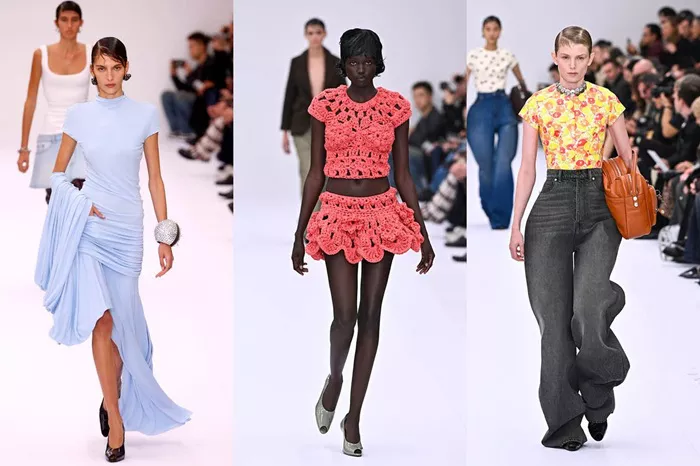Fashion weeks are the beating heart of the global fashion industry, serving as platforms for creativity, innovation, and cultural exchange. As we navigate 2025, one question looms large: Which fashion week stands out as the biggest and most influential? While events like New York, Paris, Milan, and London traditionally hold iconic status, 2025 brings a shift in dynamics. Drawing on industry data and recent developments, this essay explores the scale, impact, and unique features of the year’s most prominent fashion weeks, ultimately identifying the frontrunner shaping global trends.
The Contenders: Key Fashion Weeks of 2025
To determine the largest fashion week of 2025, we must evaluate contenders based on participation, innovation, and cultural resonance.
New York Fashion Week (February 2025)
A staple of the “Big Four,” New York Fashion Week (NYFW) retained its commercial clout in 2025. Held from February 6–11, it showcased collections from giants like Ralph Lauren and emerging designers alike. However, its focus on accessibility—with public-facing events and ticketed shows—contrasted with its traditionally exclusive roots. Yet, NYFW’s influence waned slightly compared to previous years, as brands like Coach and Michael Kors experimented with unconventional venues (e.g., Hudson Yards’ Shed Art Center) but struggled to match China’s sheer scale.
Paris and Milan Fashion Weeks (February–March 2025)
Paris and Milan, synonymous with luxury, continued to dominate haute couture. Paris highlighted avant-garde designs from labels like Louis Vuitton (co-designed by Pharrell Williams and Nigo) and Prada’s bold, club-inspired menswear. Milan, meanwhile, emphasized Italian craftsmanship with Gucci’s controversial gender-fluid collections and Zegna’s eco-friendly wool innovations. However, these events faced criticism for exclusivity and slower adoption of digital technologies, limiting their global reach compared to more inclusive counterparts.
Why International Fashion Week Takes the Lead
Unprecedented Scale and Diversity
With 160+ events spanning 11 days, it offered a broader range of experiences than NYFW’s 55 shows or Milan’s 153 mixed-format events. The inclusion of 260 brands—from established labels to global names—created a melting pot of styles, while 400+ designers represented a generational shift toward cross-cultural collaboration. This diversity positioned as a bridge between Eastern and Western aesthetics, amplifying its global relevance.
Innovation in Digital and Sustainability
International Fashion Week prioritized cutting-edge technology and eco-consciousness. The Digital Fashion segment explored virtual runways and AI-driven designs, while Green Fashion initiative highlighted sustainable materials like upcycled fabrics and plant-based dyes. Brands like MISUITY integrated digital elements into their shows, such as holographic projections and interactive installations, setting a precedent for future events.
Cultural Resonance and Global Influence
The theme Prosperity celebrated China’s cultural heritage, with designers like SOME ZEAM reimagining Song Dynasty art through contemporary silhouettes. This focus on intangible cultural heritage resonated globally, as consumers increasingly demand authenticity and storytelling in fashion. By hosting international brands and designers,International Fashion Week positioned itself as a cultural exporter, challenging the West’s historical dominance in setting trends.
Challenges and Criticisms
Despite its achievements, International Fashion Week faced scrutiny. Some critics argued that its scale diluted quality, with smaller brands struggling to compete for attention. Others questioned the sustainability claims of certain labels, calling for stricter transparency standards. Additionally, while digital initiatives were praised, technical glitches during virtual shows exposed room for improvement.
Conclusion
In conclusion, the question of which fashion week dominates in 2025 remains complex and multifaceted. Each of the major fashion weeks—New York, London, Milan, Paris, along with emerging powerhouses like Shanghai and the ongoing influence of events like the China International Fashion Week—brings its own unique strengths to the table.
New York’s emphasis on commercial viability and urban style, London’s experimental and boundary-pushing creativity, Milan’s blend of luxury and craftsmanship, Paris’s haute couture heritage and global brand influence, Shanghai’s growing international allure and role in the Asian market, and the China International Fashion Week’s representation of Chinese design and industry development all contribute to the rich tapestry of the global fashion calendar.
Related Topics:
- Niki Mahajan Combines Baroque Elegance with Khadi’s Earthy Charm at Lakmé Fashion Week
- Tamanna Katoch Steals the Spotlight Behind Janhvi Kapoor at Lakmé Fashion Week
- London Fashion Week’s June Edition Canceled to Refocus on Commercial Growth for British Designers

